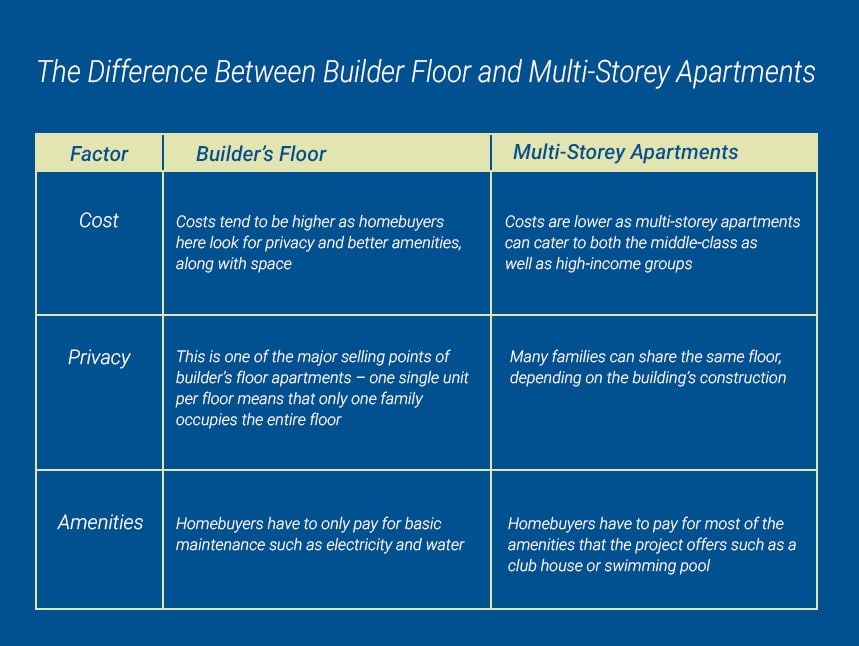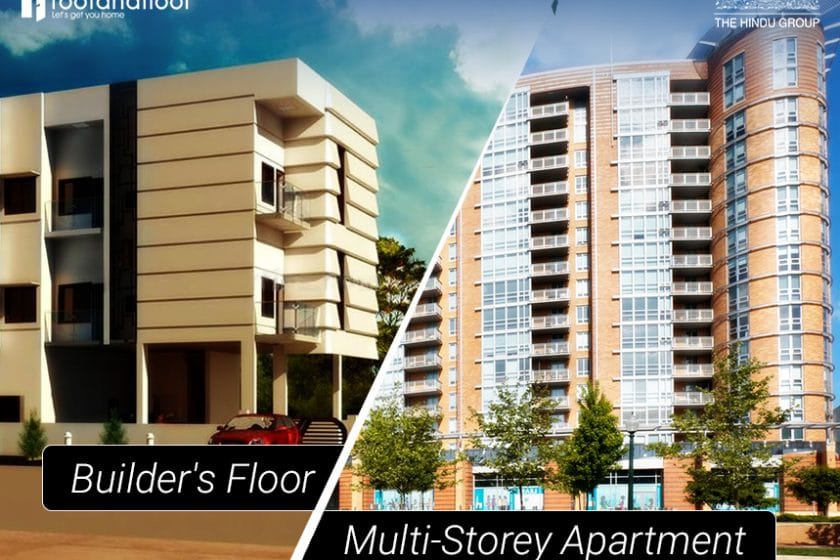Millennial homebuyers today are spoilt for choice with all the options available in the real estate market today. Be it multi-storey apartments, premium villas, and villaments, real estate is quite a hot investment option for a large majority of Indians living in the country and abroad. The millennial homeowners, well aware of the market and property valuations, are ready to splurge their hard-earned money, only if the returns are good.
In this end-user driven market, builders must closely monitor the customer pulse. Multi-storey apartments that offer community living with more lifestyle facilities and parking are eternal favourites. But builder floor apartments that are an independent floor unit in a low rise, plotted, residential colony is a premium choice. A recent survey found that about 60% of first-time homeowners continue to prefer apartments over independent floors. But the aficionados of independent living are also continually increasing giving rise to developers taking interest in builder floor apartments.
What are builder floor apartments?
These are low rise buildings with two to four floors, where each floor is an independent dwelling.
Builder floor housing is a single, self-contained floor unit offering greater space, usually more than 1500 sq. ft. It is a complete home with separate electricity and water supply provisions. Builder floors can be more expensive as they offer more independence and flexibility.
So, what is spurring buyer interest in builder floor apartments?
The need for privacy and control
Rising income and a focus on privacy are leading to a surge for builder floor apartments.
Many landowners are collaborating with local builders to re-develop their existing property into builder floor apartments. This offers rich dividends like rental income from individual floors and a high degree of privacy.
Moreover, the lesser number of dwellings mean better control over resources like water and electricity.
More space, more space, more space
In India where joint families are ubiquitous, many homebuyers pool their resources to splurge on the premium space of a builder’s floor apartment.
Moreover, if you are fond of entertaining or gardening, the extra space becomes an asset for homeowners. And if you need to redecorate, there is no question of seeking permission from reluctant neighbours. You need a gazebo in your terrace, then go ahead if you have the required permissions.
Many homeowners cherish this degree of independence and are thus, investing in a builder floor apartment.
Lower maintenance cost
Builder floors may have lesser amenities and common space, which means that monthly maintenance costs go down considerably.
There’s also a great deal of control over what you need to pay for the common good. But on the flip side, lesser residents mean that the per flat average of maintenance cost, especially for parking and power backups, might shoot up.
What are multi-storey apartments?
Multi-storey apartments are your typical flats where you have to share the floor with other apartments. A typical multi-storey apartment project can have around 5-8 floors or more!

Multi-storey apartments come with their own unique advantages
The cost factor
Multi-storey apartments are comparatively easy on the pocket than builder floor apartments.
In an A category city like Bangalore for instance, the average price of apartments might range from Rs 6,000 to Rs 8,000 per sq. ft whereas a builder floor flat might set you back by Rs 8.000 – Rs 10,000 per sq ft.
There is easily a premium of 20% for builder units.
Registration and possession issues
Apartment registration laws are pretty uniform across states. The Apartment Act covers all buildings that are more than 5 floors high and allow possession at the time of registration. The cost of registration is also pretty affordable.
Property registration can be quite a conundrum as building by-laws differ in states.
For example, the Gurgaon Development Authority and Haryana Urban Development Authority have stopped registering building floor units to maintain the population density. There have been instances of builders flouting building by-laws for unauthorised floors, resulting in demolition orders as well.
Security becomes the norm
An apartment complex has a wider net of security with single manned entrances, intercom facilities, and wider fencing. Since the security is shared by all residents, the costs are nominal and factored into the maintenance costs.
Lifestyle amenities and community living
Multi-storey apartments provide amenities like a clubhouse, parks, and swimming pools, depending on the available common areas.
Little wonder that millennials in India prefer gated, multi-storey apartment complexes for the community life and available lifestyle choices. These amenities are maintained by the Residents Welfare Association (RWA), wherein collective thinking and democratic processes allow for better say in the common welfare.
Conclusion
The choice between a builder rise unit or multi-storey apartment is becoming nuanced over time and with the introduction of newer laws.
It is a toss between affordability and your preferred lifestyle.
This article was originally published on www.thehindu.com






